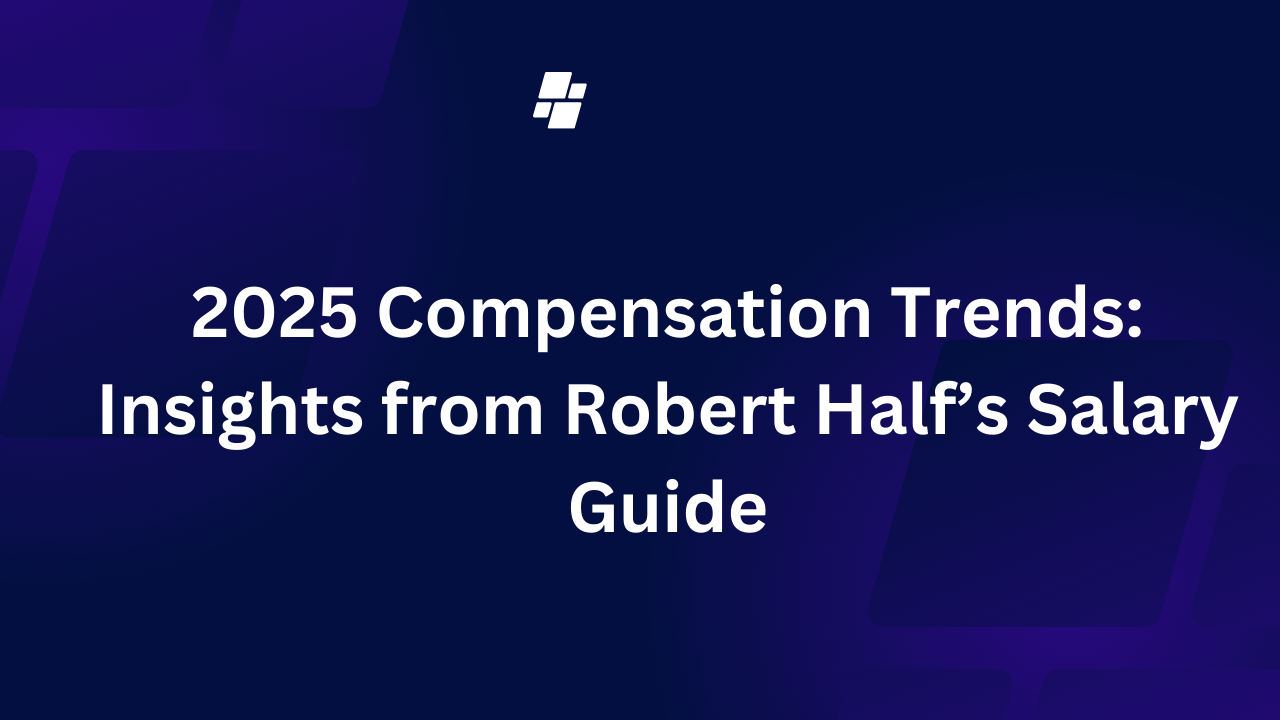As we move into 2025, the economic landscape continues to evolve rapidly. With inflation persisting and concerns about a potential recession looming, understanding compensation trends has never been more critical for both job seekers and employers.
Competitive salaries, strategic budgeting, and retention-focused benefits will play pivotal roles in navigating these economic uncertainties.
In this guide, we’ll dive into key takeaways from Robert Half’s 2025 Salary Guide, exploring trends across industries, job roles, and regions. Whether you’re looking for a new job, negotiating a raise, or planning your organization’s compensation strategy, these insights will help you make informed decisions.
Economic Outlook and Its Impact on Compensation
The broader economic environment significantly influences compensation trends. Here’s how current conditions shape pay structures in 2024:
1. Inflation Continues to Drive Salary Growth
- Persistent Inflation: Inflation peaked at over 9% annually in 2022 and, while it has slowed, it remains above the Federal Reserve’s 2% target. This drives companies to increase salaries to maintain purchasing power for employees.
- Salary Projections: Many experts anticipate salary increases of 3–5% in 2024 to offset inflationary pressures.
2. Tight Labor Market
- Job Openings: As of late 2023, there were nearly 2 open jobs for every unemployed person in the U.S., underscoring a tight labor market.
- Impact: Businesses must offer competitive salaries, bonuses, and benefits to attract and retain top talent.
3. Recession Risks
- While wage growth looks promising, a recession could lead to salary freezes or even pay cuts in sectors like tech, real estate, and finance if economic conditions worsen.
- Strategic Adjustments: Companies may adjust compensation budgets based on sector-specific or regional downturns.
Key Takeaways from Robert Half’s 2025 Salary Guide
Robert Half, a leading staffing and recruitment firm, publishes an annual salary guide based on its extensive database of job placements and market research. Here’s what to expect in 2024:
1. Accounting and Finance Roles See Continued Growth
Demand for accounting and finance professionals remains high, driven by regulatory requirements and businesses’ need for financial planning.
- Staff Accountants: 5–7% increase; median salary: $56,000–$65,000.
- Senior Accountants/Bookkeepers: 5–7% increase; median salary: $62,000–$72,000.
- Junior Financial Analysts: 5–6% increase; median salary: $68,000–$75,000.
- Financial Managers/Controllers: 5–7% increase; median salary: $92,000–$110,000.
Takeaway: The competition for accounting and finance talent, coupled with remote work flexibility, continues to drive steady pay increases.
2. Tech Sector Salaries Remain Competitive
Despite some challenges in the tech industry, core roles in development, engineering, and project management remain in high demand.
- Junior Developers: 4–6% increase; median salary: $80,000–$90,000.
- Mid-Level Developers: 4–6% increase; median salary: $105,000–$125,000.
- Senior Developers/Tech Leads: 4–6% increase; median salary: $135,000–$165,000.
- Project Managers: 5–6% increase; median salary: $105,000–$125,000.
Takeaway: While tech hiring may slow in some areas, core technical skills remain valuable, ensuring competitive salaries for developers and engineers.
3. Healthcare Roles Experience Moderate Growth
With rising demand for healthcare services, compensation in this sector continues to grow, albeit more moderately than in tech or finance.
- Registered Nurses (RNs): 3–5% increase; median salary: $72,000–$90,000.
- Medical Technicians: 3–5% increase; median salary: $38,000–$46,000.
- Office Managers (Healthcare): 3–5% increase; median salary: $45,000–$55,000.
- Physicians: 3–4% increase; median salary: $181,000–$265,000.
Takeaway: Healthcare salaries reflect the sector’s essential nature and labor shortages, ensuring continued growth.
Regional Salary Trends
Compensation trends vary across regions due to differences in cost of living, labor demand, and local economic conditions:
- New York City: Salary increases of 4–6%, especially in finance, tech, and other professional roles.
- San Francisco Bay Area: Modest pay hikes of 4–5%, with tech salaries potentially seeing a slight slowdown.
- Seattle: Salaries projected to rise by 3–5%, driven by tech demand and migration.
- Dallas-Fort Worth: Wage growth of 3–4%, supported by a growing business hub and lower living costs.
- Chicago: Stable salary increases of 3–4% in professional roles, reflecting steady corporate activity.
Takeaway: Coastal cities often offer higher pay but come with increased living costs. Affordable regions like Dallas and Chicago provide steady wage growth with lower expenses.
How to Use the Salary Guide for Strategic Decisions
For Job Seekers
- Salary Negotiation: Use the guide to benchmark offers and negotiate competitive pay.
- Career Focus: Target roles and industries showing strong wage growth, such as finance or healthcare.
- Geographic Decisions: Consider relocation to areas with better compensation adjusted for cost of living.
For Current Employees
- Benchmark Your Pay: Compare your salary to market averages. If your pay isn’t keeping pace with inflation, consider discussing a raise.
- Retention Leverage: Use the tight labor market to negotiate better benefits or perks.
For HR and Talent Professionals
- Retention Strategies: Budget for 3–7% raises to retain talent and stay competitive.
- Benefits Expansion: Enhance non-wage benefits like remote work options, wellness programs, and retirement plans.
- Market Competitiveness: Adjust offers to match or exceed regional and industry benchmarks.
For Businesses
- Budgeting: Incorporate anticipated salary increases into annual budgets.
- Strategic Adjustments: Be prepared to scale back salaries moderately in recession-affected industries.
- Retention Focus: Invest in programs that boost employee satisfaction and engagement.
Conclusion
Robert Half’s 2025 Salary Guide provides critical insights into the evolving compensation landscape. With projected salary increases averaging 3–7%, businesses must remain competitive to attract and retain top talent, even amid potential economic challenges.
While inflation continues to drive pay growth, looming recession risks remind us of the importance of balancing wage increases with financial sustainability. For both employers and job seekers, staying informed about salary trends ensures strategic decision-making in a volatile economic environment.
Whether you’re negotiating a salary, planning your budget, or exploring career opportunities, these insights will help you navigate 2024 with confidence. Stay flexible, prioritize value, and be prepared to adapt to changing conditions.
